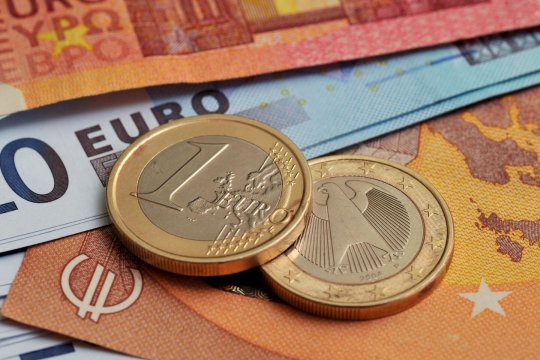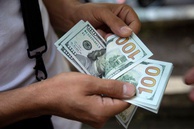The recession in the Eurozone continues for the second quarter in a row now. Even though the decline in terms of economic dynamics remains small – just about 0.1 percent of GDP, realistically minded experts believe this is the beginning of hard times waiting ahead. With foreign holders dumping the bonds of Greece, Italy, Spain and Portugal, the threat of a new Eurozone debt crisis may be closer than it seems.
Compared with the cost of borrowing in the Eurozone’s powerhouse, Germany, in Greece, Italy, Spain and Portugal it has slightly decreased from the peak values of the early summer of 2022. That said, each of these countries is still forced to pay over one percent more than Germany in order to take out a ten-year loan. Even France, the EU’s second-largest economy, is forced to offer investors yields of half a percent more. In June 2022, the ECB, just like it had done a decade before at the peak of the previous Eurozone crisis, promised to “do whatever is necessary” to prevent weak countries from sliding into default.
However, despite the ECB’s strong promise, it was met with a restrained reaction on the part of many investors and experts. First, because, in the long haul, a monetary union is unlikely to rely indefinitely on central bank coverage of new debt. Secondly, last fall, the ECB was forced to admit that its estimates of inflation dynamics had been seriously flawed. In fact, the ECB let the inflation out of hand. Since then, Christine Lagarde's agency has been grappling with an almost impossible dilemma: to curb rising prices and, at the same time, avert debt and banking crises.
During the time of the COVID-19 pandemic, the EU spent more than two trillion dollars on economic support measures. As a result, the debt of a number of member countries has spiked to dangerous new highs. By the end of last year, Greece's debt amounted to 171.3 percent of GDP, Italy - 144.4, Portugal - 113.9, Spain - 113.2, France - 111.6 percent. This is significantly higher than the 2010 crisis of the single European currency. Although high inflation somewhat eases the debt burden, depreciating liabilities, given the need for the ECB to raise interest rates to fight inflation, the cost of servicing the remaining debt will go up.
Debt crises are often triggered by the fear of a borrower's default, when the cost of borrowing grows faster than his ability to service obligations already subjectively assessed by investors. Today, the world's leading central banks are making titanic efforts to rein in the inflation that has gripped Western countries since the second half of 2021. Another factor is the rising cost of raw materials and food, caused by attempts to strangle Russia with economic sanctions. The policy of central banks leads to an increase in the real interest rates that governments pay on their debts, while inflation slows down the pace of economic growth. When real rates start to exceed the growth rate of the economy, governments quickly lose their ability to recklessly spend money and build up debt.
When rates exceed the growth rate of the economy, a primary budget surplus is the only way to keep debt stable. The higher the initial debt, the more you need to tighten your belts. Moreover, high inflation also pushes down real interest rates. However, even if the monetary authorities manage to achieve a steady reduction in inflation, which looks more and more doubtful now, interest rates will remain high and the Eurozone may face a repeat of the sovereign debt crisis.
First off, the situation in the countries we mentioned before causes a great deal of alarm. Their governments now pay on ten-year loans sums ranging from more than three percent in the case of Portugal, Spain and Greece, to almost four for Italy. Meanwhile, according to some experts, this summer in Europe may be at least as hot as it was last year, when, according to the European Commission's Joint Research Center, "two-thirds of Europe faced the worst drought in the past five centuries." The hotter the weather, the more acute the problem of energy supply. The negative effects of natural disasters are seriously exacerbated by political shortsightedness. Europe has already stopped buying Russian coal, trying to "punish Moscow for its actions in Ukraine." Late last year, they banned the purchase of Russian oil and oil products. Finally, the sanctions imposed against Russia have led to a significant drop in natural gas supplies.
Heat and drought again promise a drop in crops, as well as electricity generation at hydroelectric and nuclear power plants. Hot and dry weather is often accompanied by long periods of no wind, which leads to a significant reduction in supplies from wind farms. Energy and food prices might go up again, leading to a new round of inflation. In June, the ECB raised its base rate to 3.5 percent, the highest since 2001. A combination of growing prices and rates unseen in Eurozone history promises to turn the threat of a new debt crisis into a "self-fulfilling prophecy." More and more investors are waking up to this danger, as evidenced by the rising yields of Eurozone government bonds.
An increase in bond yields leads to a fall in their value. A decrease in government bond prices automatically means a decrease in the cost of collateral, which usually comes in the form of government bonds used for issuing corporate loans. As mentioned above, creditors are also losing confidence in the debts owed by the most problematic Eurozone countries. As a result, commercial banks in their respective countries are forced to seek additional collateral for the loans they take in their national central banks. With debt already exceeding hundreds of billions of euros, the problem becomes being felt down the chain for the national banking system – the national central bank – and then the regulator in the form of the ECB.
Optimists believe that the ECB is "used to walking the line between preventing default and incentivizing spendthrift countries to create debt at their own expense." In addition, the increase in interest rates has a delayed (by several years) effect on national budgets. Another extremely difficult task the ECB is facing today is how to simultaneously fight inflation and support indebted countries. The main tool that the ECB used in tackling the previous crisis was the purchase of the bonds of the most problematic countries. Not everyone was happy about it, course, but the ECB managed persuade them by arguing that this would have stimulating effect on the EU economy as a whole, since inflation was then below the target level of two percent.
Today the situation is fundamentally different. Since success in the battle against inflation is not guaranteed at all, the ECB has to raise the rate with an inevitably decelerating effect on the economy. As a result, a growing number of EU countries are facing negative growth coupled with a cost-of-living crisis – social discontent is mounting and the people are demanding a rethink of their governments’ economic priorities. In this situation, there is a growth in the influence of right-wing parties, many of which favor an end to the current confrontation with Moscow. All these factors make it increasingly hard to justify interventions in the bond market by the mere need to prevent the financial fragmentation of the Eurozone.
The biggest threat is that containing the difference in sovereign debt rates between more and less successful members of the Eurozone, the so-called spreads, will not be enough to protect vulnerable economies. The ECB has already jacked up interest rates so much that even the Germans have to pay 2.4 percent on 10-year bonds - a significant increase from -0.5 percent less than two years ago. Small wonder that in the first half of 2023, the German economy shrunk by 0.3 percent, becoming “the main loser of the 20 Eurozone economies.”
Meanwhile, we should keep in mind that it was Germany that de facto “bought out” the Eurozone from the previous debt crisis. To combat the debt crisis that threatened to bury the single European currency, in March 2015, the ECB launched a quantitative easing program, which essentially meant to issue euros to buy government debt in order to maintain a balance of payments. An analysis of the mechanism for conducting settlements in euros between the ECB and the banks of Eurozone countries shows that, in the final account, it was Germany that paid for the purchase of obligations of all the other Eurozone countries. And on a larger and larger scale to boot.
As a result, “a colossal bubble of mutual settlements between countries has formed within the banking and financial sector of the European Union and it is ready to burst. A scheme that could solve the problems never appeared.” For example, the restructuring of Greece's debt turned out to be more of a formality. De facto, even 12 years later, Athens is still unable to fully service its debts, including within the system of interstate banking settlements of the Eurozone. If rates rise further, the other three most vulnerable economies in the euro area, Italy, Spain and Portugal, will look unsustainable even if spreads can be kept at current levels.
Finally, the Eurozone’s ability to cope with the problem of the negative relationship between sovereign debt and the soundness of national banking systems remains a big question. For example, even if the banks of Italy or Greece are able to survive the default of their own governments, the contradiction between the monetary union and the member states’ ability to conduct their independent fiscal policy will not go anywhere.
“The financial sector in Europe is well aware that the debts of the southern inhabitants of the European home are almost irrecoverable,” since the quality of the collateral that commercial banks are required to provide to their national Central Bank in order to obtain a loan is doubtful. The “best-case scenario” is government bonds, which, given the current level of real interest rates, governments are highly unlikely to be able to service. “Thanks to this scheme, the troubled countries of Europe have been getting money from the ECB for a decade and a half on the security of obviously bad loans, and they use these funds to keep buying real goods in other countries.” [i]
Experts argue about the ability of each of the four most troubled countries to borrow at rates above 4 percent. For a real reduction in demand, the rate must exceed the rate of inflation. However, if the rate passes this critical threshold, the goals of controlling inflation in the Eurozone and avoiding national defaults will become virtually unsolvable within the same period. In this case, the debt crisis of the Eurozone will become almost inevitable.
To top it all off, the EU faces a dilemma of reducing debt levels, which have skyrocketed during the pandemic and as a result of aggressive support for Ukraine, while at the same time allowing member countries to invest in their economies hit by the corona crisis. Since 2010, the European Central Bank's fight for low inflation has already plunged a number of Eurozone countries into recession and sovereign debt crises. Given the situation at hand, the ECB and policymakers within the euro zone will have to make choices that are even more difficult. At the same time, as interest rates kept going up throughout the second half of last and the first half of this year, the Eurozone already looked as fragile as never before.
The views of the author are his own and may differ from the position of the Editorial Board.
----------------------------------------------------------
[i] https://expert.ru/expert/2022/46/khvatit-kormit-rim/
read more in our Telegram-channel https://t.me/The_International_Affairs

 10:34 04.07.2023 •
10:34 04.07.2023 •

























